|
BULB LOG 46 --- 12th November 08
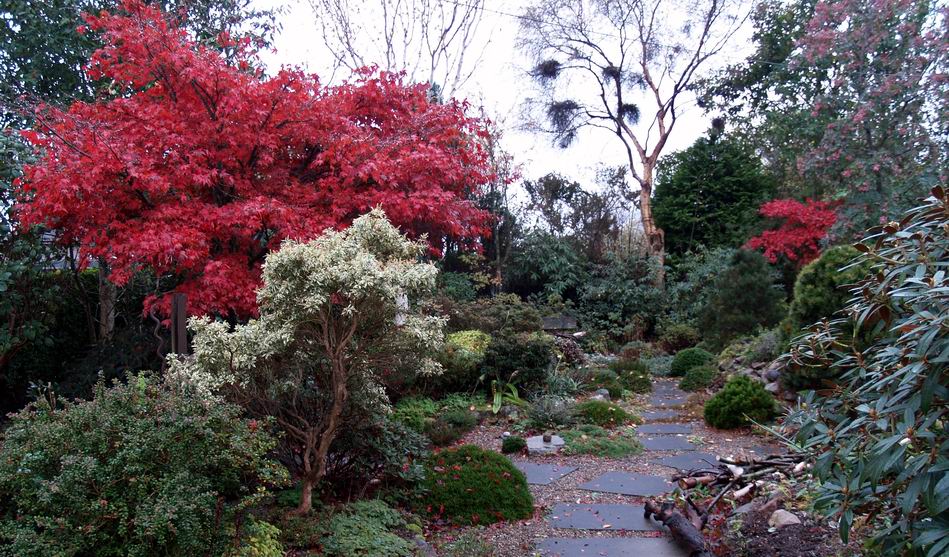
Autumn colour
The Acers and other trees in our garden are still holding their brilliant autumn colours despite the strong winds we have been having recently. The best and most reliable for our colder climate is Acer 'Osakazuki' - the two bright red ones that you can see in this picture above are this form.
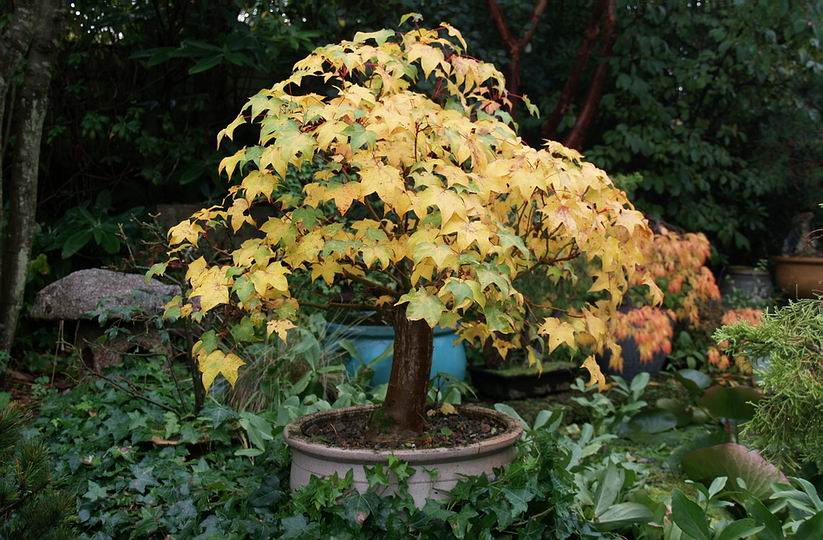
Acer in pot
It is not just bulbs that I grow in pots - I have had this Acer growing in a pot for over ten years now. I raised it from seed and it started out in the garden but as always I was too ambitious with the number of trees that I planted so when it reached three meters high I decided that it had to go or be moved - not having any space to move it too I decided to try and cut it down to grow in a pot. I first cut around the roots about 30 cms from the trunk and then I also cut the trunk down to about 30cms in height. It was around this time of year that I lifted the root ball and trimmed all the roots back so they would fit into the pot. The plant had all winter to start making some new roots and in the spring I watched the sawn off trunk with anticipation for any signs of growth buds developing - which they did in abundance. I reduced the number of new growths and only kept the ones I needed to create a tree shape in small scale and every year I reduce the new growth to one growth bud. It is only a Bonsai in t
hat sense of the word that it is a tree growing in a pot. In a way I treated the dug-up-trunk and cut-back roots like a bulb.
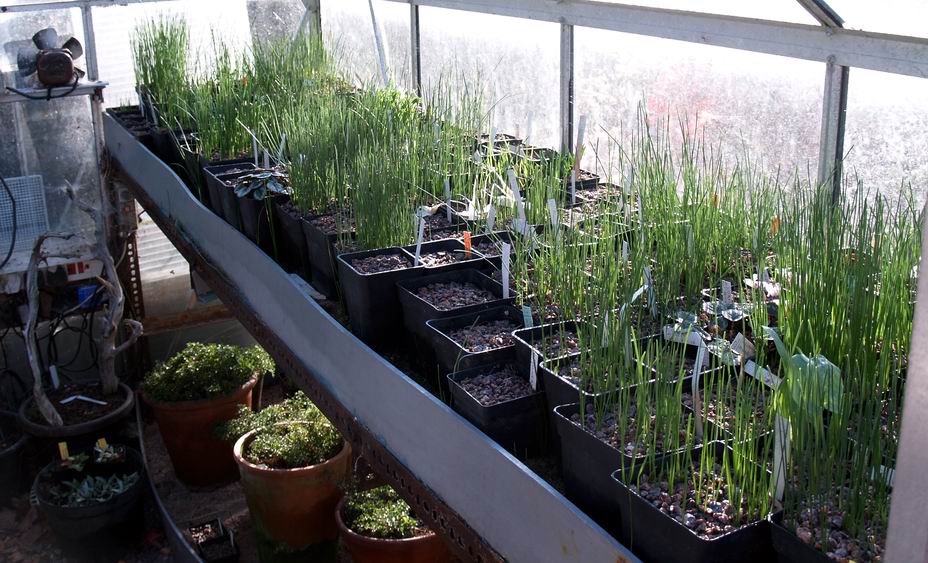
Bulb house Narcissus leaves
In the Bulb house many of the Narcissus have quite well developed leaves now and it is important not to let them dry out at all so I do water them occasionally on mild bright days.
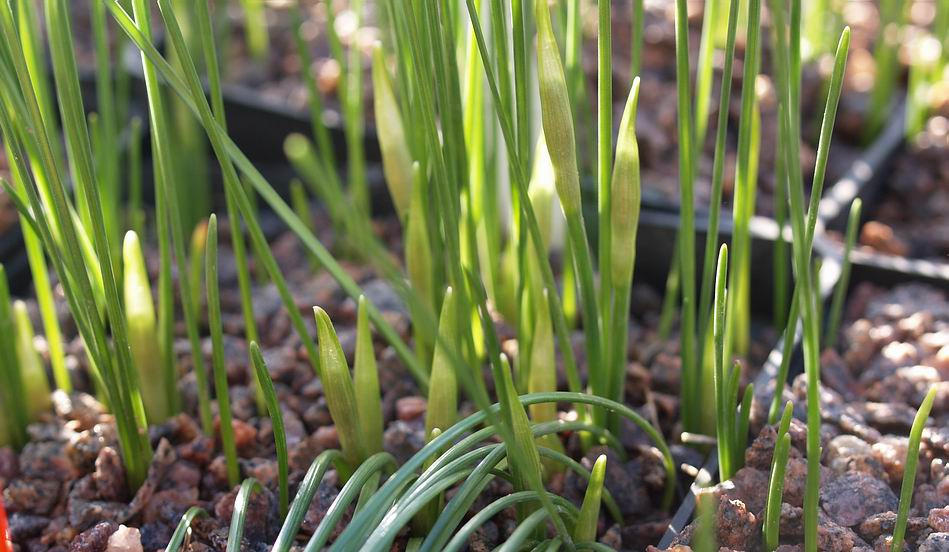
Narcissus growth
It is not only the leaves of some of the Narcissus that are well developed but the flower buds of many of the winter flowering species are also showing.
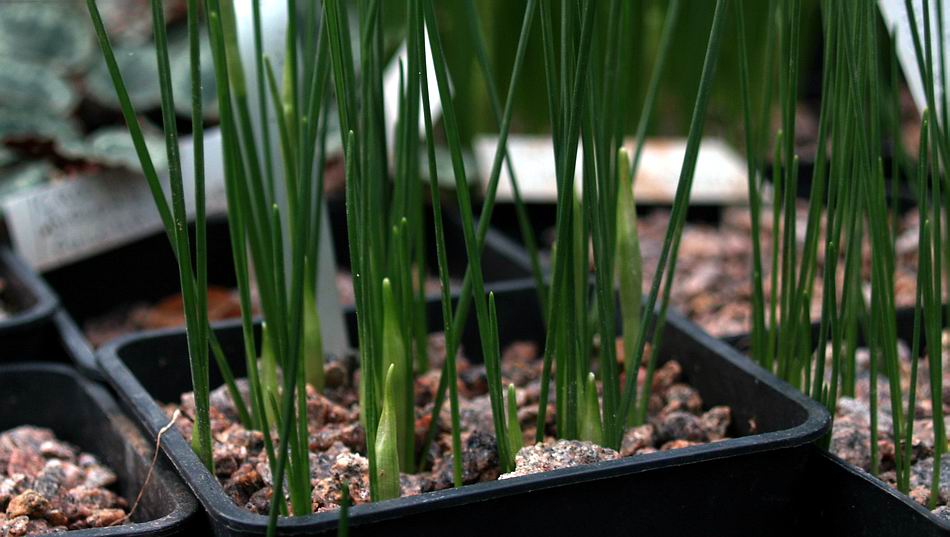
Narcissus flower buds
Bulbs like Narcissus cantabricus foliosus, N. romieuxii mesatlanticus and N. 'Camoro' are all in bud now. When they flower will depend on the temperature- if we have a warm period they will flower soon but if the weather turns cold it may be months before these buds open into flowers. I have had Narcissus 'Camoro' in flower in October and, in a very cold winter, I have also had the same plant flower in March. The flower development can also be slowed down by keeping the bulbs too dry but that will harm the growth of the bulb which may break down into lots of small non-flowering sized bulbils as a result.
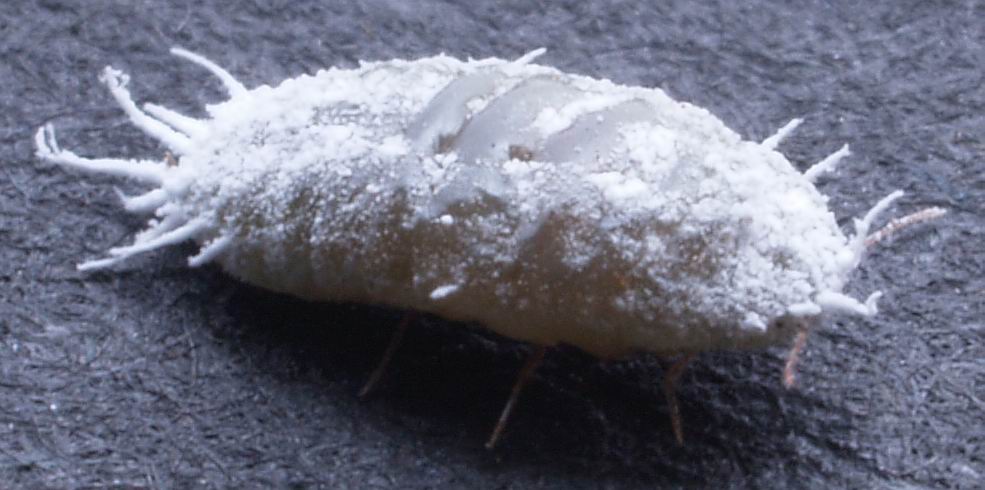
Woolly aphid
It is important to be continually checking your bulbs for the enemy - aphids which can appear even in the winter all be it in smaller numbers than in the warmer spring. This is a woolly aphid that I found on one of Maggi's orchid plants - luckily it prefers the warmer conditions in our kitchen and I have never found any in the bulb houses.
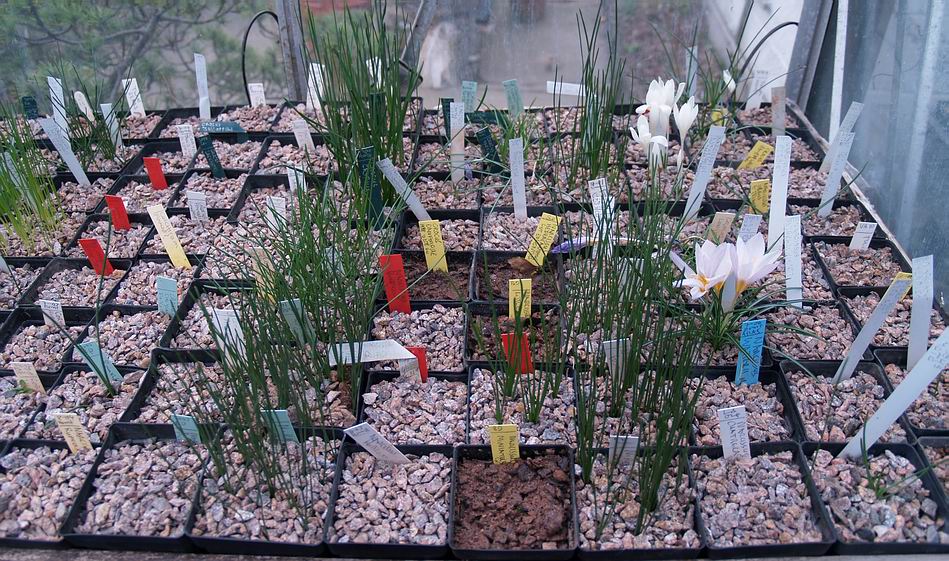
Prop House
It is important to ensure that all your pots of bulbs have sufficient water for their state of growth. Bulbs whose leaves are actively growing need more moisture than bubs that are still under ground so I water them directly into the pot when the leaves are showing while the ones with no signs of growth above the gravel only need to retain some moisture and they usually get enough from the wet sand bed that they are sitting on.
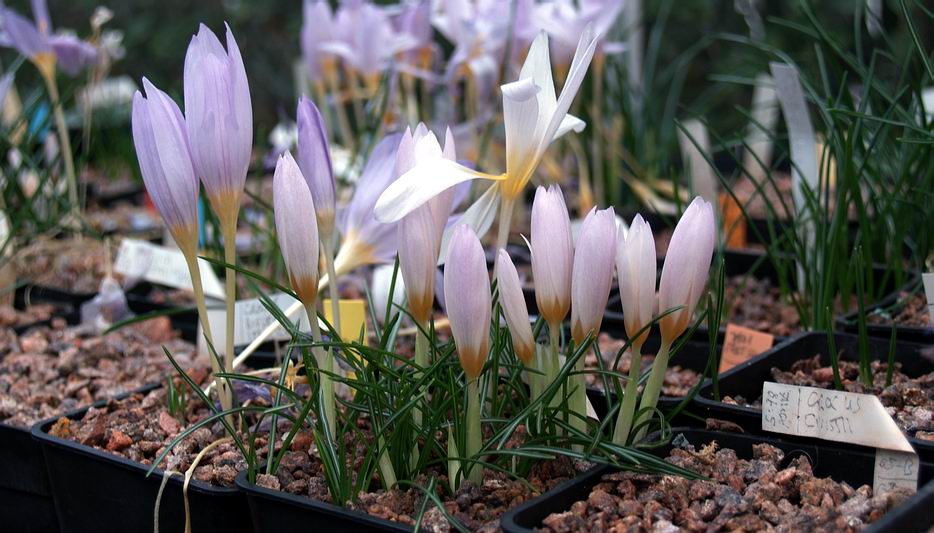
Crocus kotschyanus and C. caspius
There are still plenty of Crocus in flower, some like Crocus kotschyanus, to the left, having their second flush of flowers while others like C. caspius on the right are in their first flush of flowers. You will also notice that some Crocus, like kotschyanus, flower in advance of their leaves so I do not water into their pots until I see the leaf growth. On the other hand I have been watering into the pots of C. caspius for a few weeks as their leaves appear before the flowers. So the rule is to water in proportion to the amount of leaf growth not the flowers.
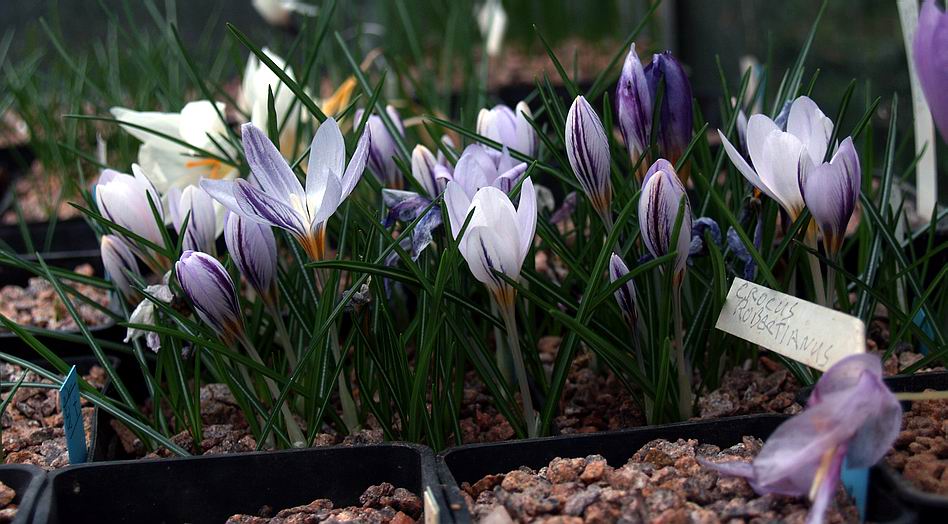
Crocus laevigatus
Crocus laevigatus is another species that has advanced leaf growth as it flowers. You can see the variation in colour markings in these pots of seedlings which also produce forms that produce their flowers any time between now and February making it a link between the spring and autumn flowering types.
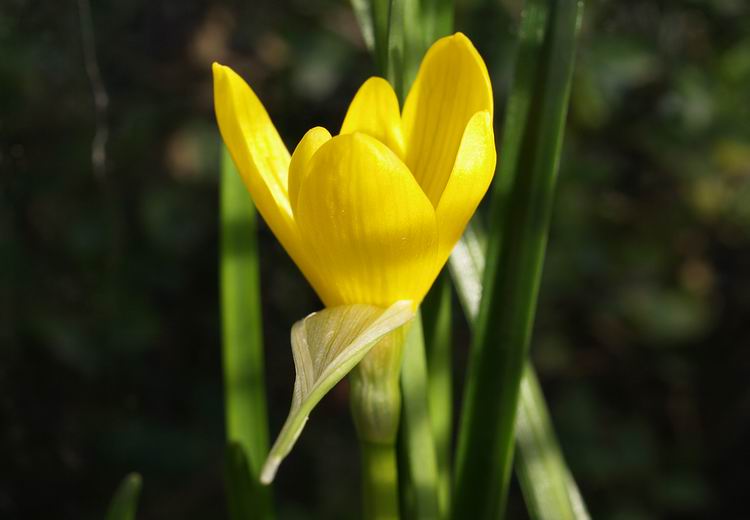
Sternbergia lutea
I did not think any of my Sternbergia lutea bulbs were going to flower this year so it was a pleasant surprise to find one at least had made the effort for me. It is a good opportunity for me to again compare the flowers of the three autumn species that I grow. Pay particular attention to the shape of the tip of the floral segments - in the case of S. lutea above the tips are sulcate - boat shaped.
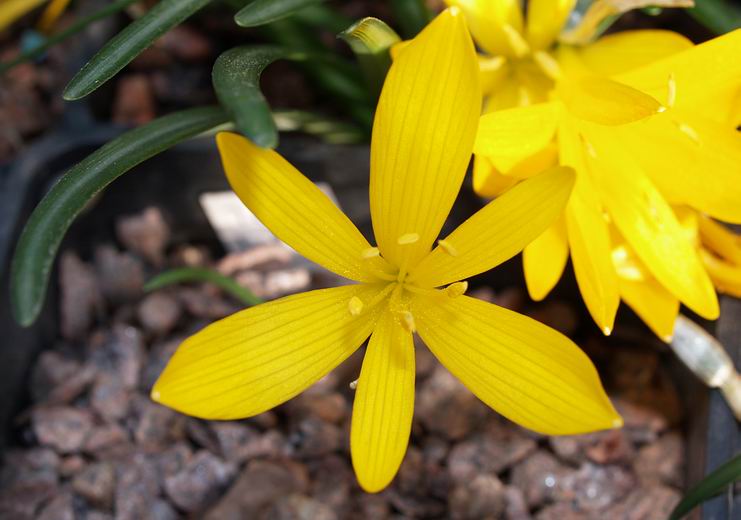
Sternbergia sicula
Next is a flower of Sternbergia sicula and it has quite acute tips that finish in a point.
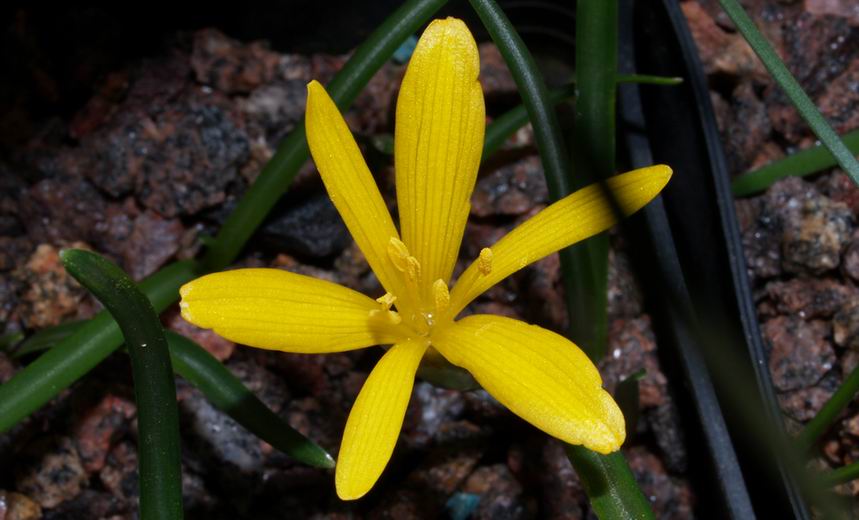
Sternbergia greuteriana
Finally look at the much more rounded tips of Sternbergia greuteriana. This is the first flowering for me of another form of Sternbergia greuteriana - it is all together bigger than the one I showed a few weeks back and I have had some doubts if it was correctly named but now it has flowered it looks correct to me.
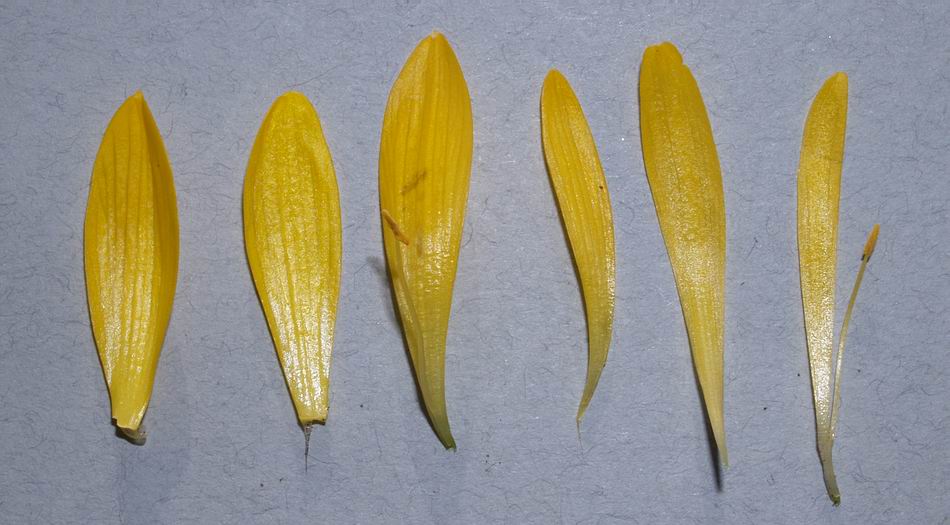
Sternbergia floral segments
Here are the inner and outer floral segments of from the left Sternbergia lutea, sicula and greuteriana for you to compare.
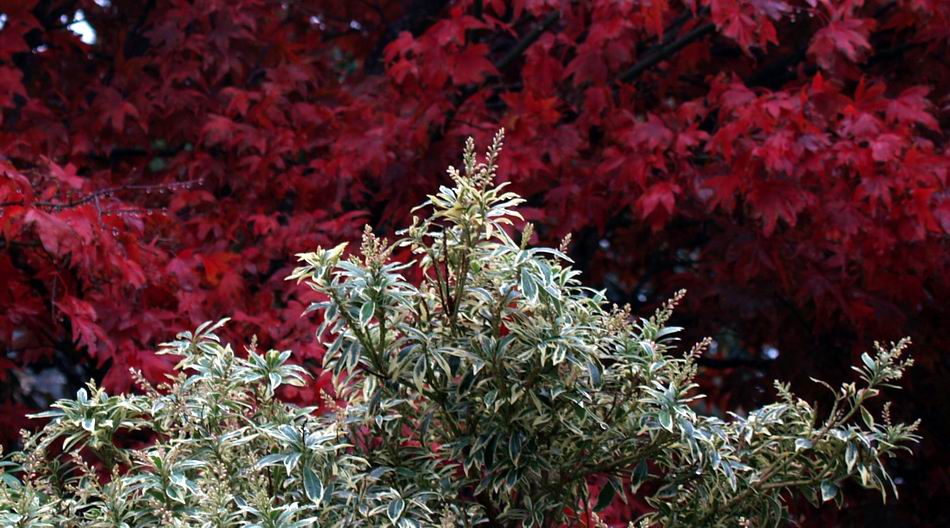
Variagated pieris and Acer
I am not a big lover of variegated foliage but I do like this form of Pieris which has smaller leaves and a slower growth than its parent - it looks particularly nice against the bright red autumn leaves of the Acer.
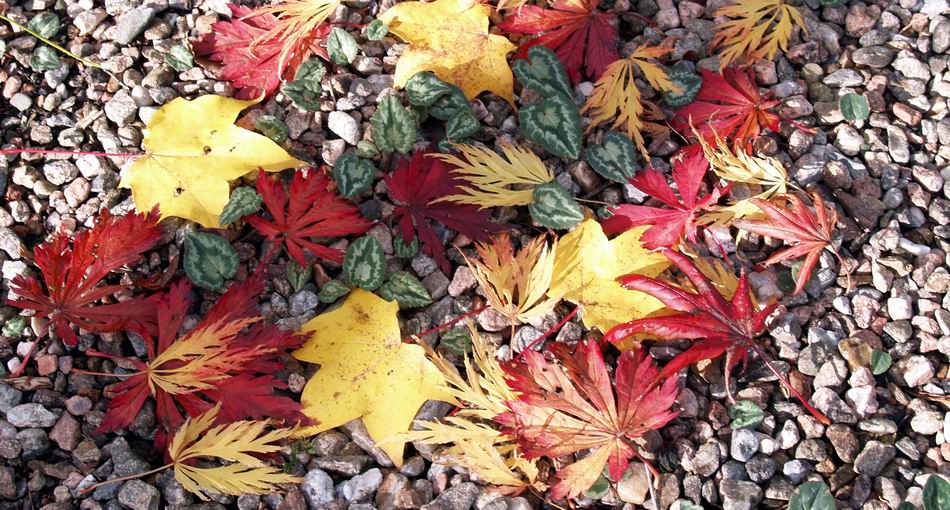
Cyclamen leaves
The fallen autumn leaves also set off these young Cyclamen leaves making a very colourful picture for me to end on this week.
^ back to the top ^
|

